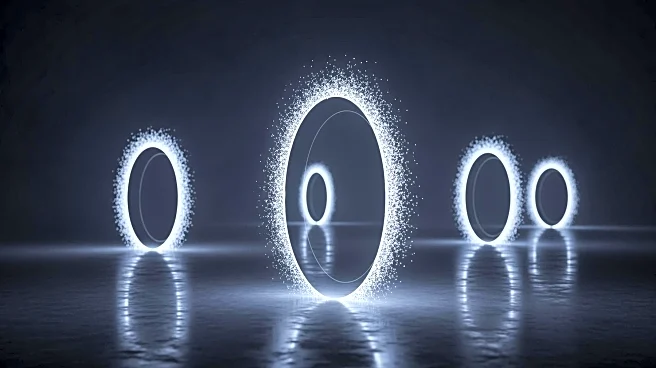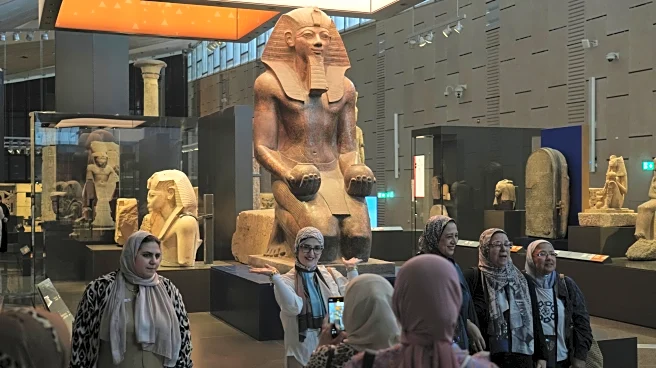What's Happening?
Researchers from Japan have developed a theoretical framework that predicts the emergence of non-reciprocal interactions in solids using light, effectively violating Newton's third law. By irradiating
light of a specific frequency onto a magnetic metal, they can induce a torque that drives two magnetic layers into a spontaneous, persistent rotation. This discovery opens new possibilities in non-equilibrium materials science and suggests novel applications in light-controlled quantum materials. The study, led by Associate Professor Ryo Hanai from the Institute of Science Tokyo, was published in Nature Communications.
Why It's Important?
This research could have significant implications for the development of new types of spintronic devices and frequency-tunable oscillators. By providing a new tool for controlling quantum materials with light, it bridges concepts from active matter and condensed matter physics. The ability to induce non-reciprocal interactions in solid-state systems could lead to advancements in multi-band superconductivity and optical phonon-mediated superconductivity, potentially revolutionizing the field of quantum materials.
What's Next?
The researchers estimate that the required light intensity for inducing non-reciprocal phase transitions is within reach of current experimental capabilities. This suggests that practical applications of this discovery could be developed in the near future, potentially leading to new technologies in quantum computing and materials science.
Beyond the Headlines
The study highlights the unique 'chiral' phase transition characterized by persistent chase-and-run dynamics, which is a result of broken action-reaction symmetry. This novel phase transition could lead to long-term shifts in how materials are engineered and utilized in various technological applications.













